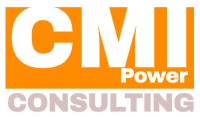CUSTOMER COMPLAINTS REDUCTION
Helping organizations to increase customer satisfaction
Customer needs
Business +500M euro yearly turnover
The project execution took place within a multinational automotive company with over 5,000 employees in its Romanian factories, boasting an annual turnover exceeding 500 million euros. The company’s challenges revolved around meeting quality objectives for customer satisfaction, as recurrent complaints resulted in significant monthly costs and client pressure. The company culture with a high level of understanding of lean methodologies.
Implementation
Based on the assessment conducted by the CMI, the approach for the project was determined in collaboration with the client, utilizing the A3 methodology in 7 steps.
The implementation phases of the project were as follows:
- Problem Clarification: This stage involves a thorough analysis of the problem to fully understand its nature and impact on operations and customer satisfaction. It’s important to clearly establish what needs to be solved and why it’s a priority.
- Problem Breakdown: This stage involves breaking down the larger problem into smaller, more manageable components. By fragmenting the problem, underlying causes can be more easily identified, and the resolution process can be managed more efficiently.
- Setting the Target: It’s crucial to set a clear and specific objective for addressing the problem. This objective should be measurable, achievable, and relevant to guide the team’s efforts in the right direction.
- Root Cause Analysis: This stage involves identifying and thoroughly analyzing the root causes underlying the problem. It’s essential to identify not only the symptoms but also the root causes to develop sustainable solutions.
- Countermeasure Development: Building on the root cause analysis, the team can develop and implement effective countermeasures to address the identified issues. These countermeasures should be solution-oriented and aimed at improving existing processes or practices.
- Results Evaluation: After implementing the countermeasures, it’s important to evaluate the results achieved to determine the effectiveness of the adopted solutions. By monitoring and measuring the results, the team can identify if the objectives have been met and adjust plans if necessary.
- Standardizing Successful Processes: To ensure that the implemented solutions are sustainable in the long run, it’s crucial to document and standardize successful processes. This allows the company to maintain improved performance over time and share best practices throughout the organization.
The following methods were also applied within the project: PDCA benchmarking, Pareto, 5Way, Gantt, defining SMART objectives.
Outcomes
By applying these methodologies in this case study, an improvement in quality was observed. Specifically, there was a reduction in the number of repetitive complaints from customers. During initial 4 months, there were 104 repetitive complaints, averaging 26 per month. However, after implementing the actions defined in this project, there was a decrease of approximately 69% in the number of repetitive complaints, averaging 8 complaints per month after one year from the initiation of the project.
